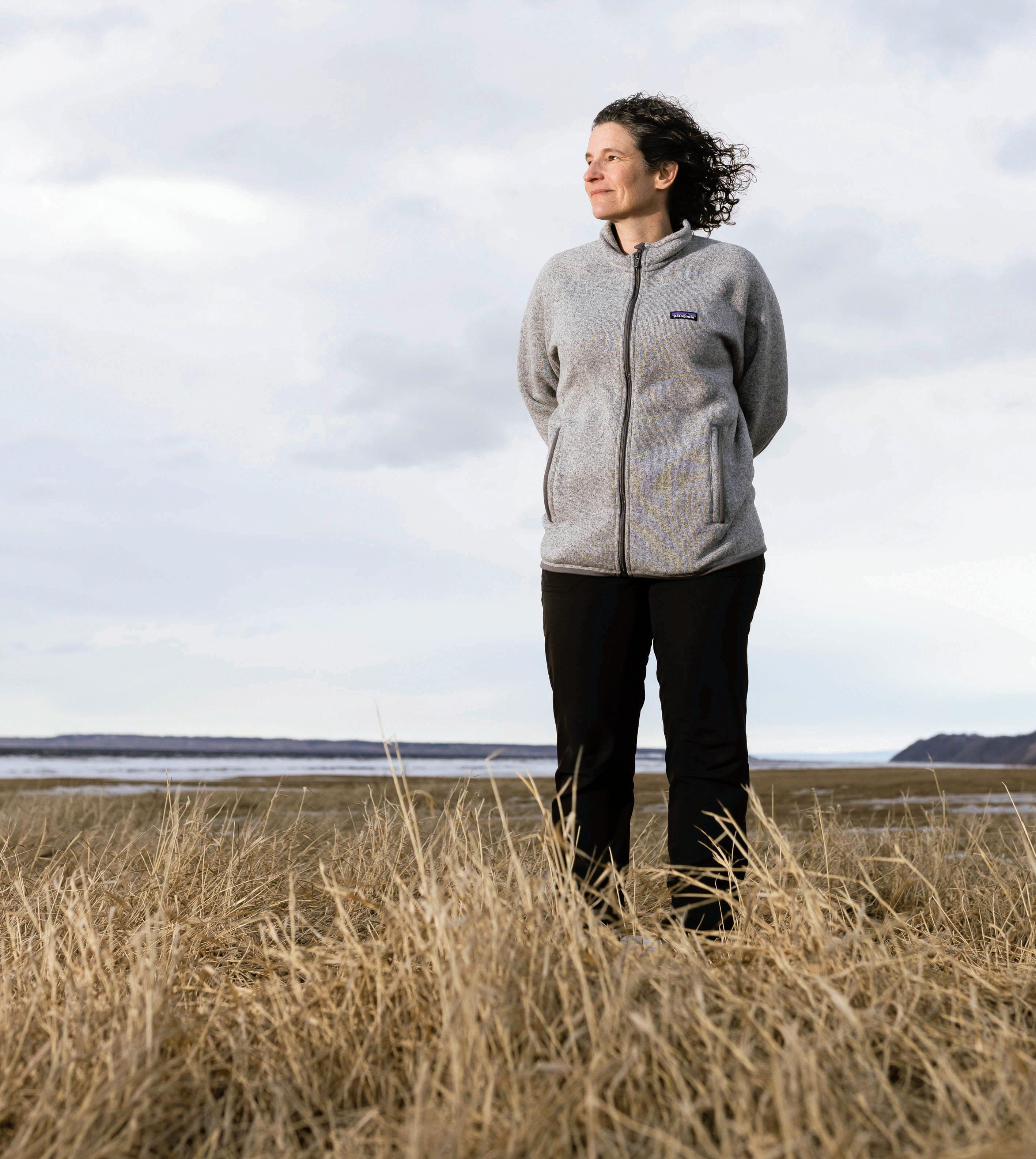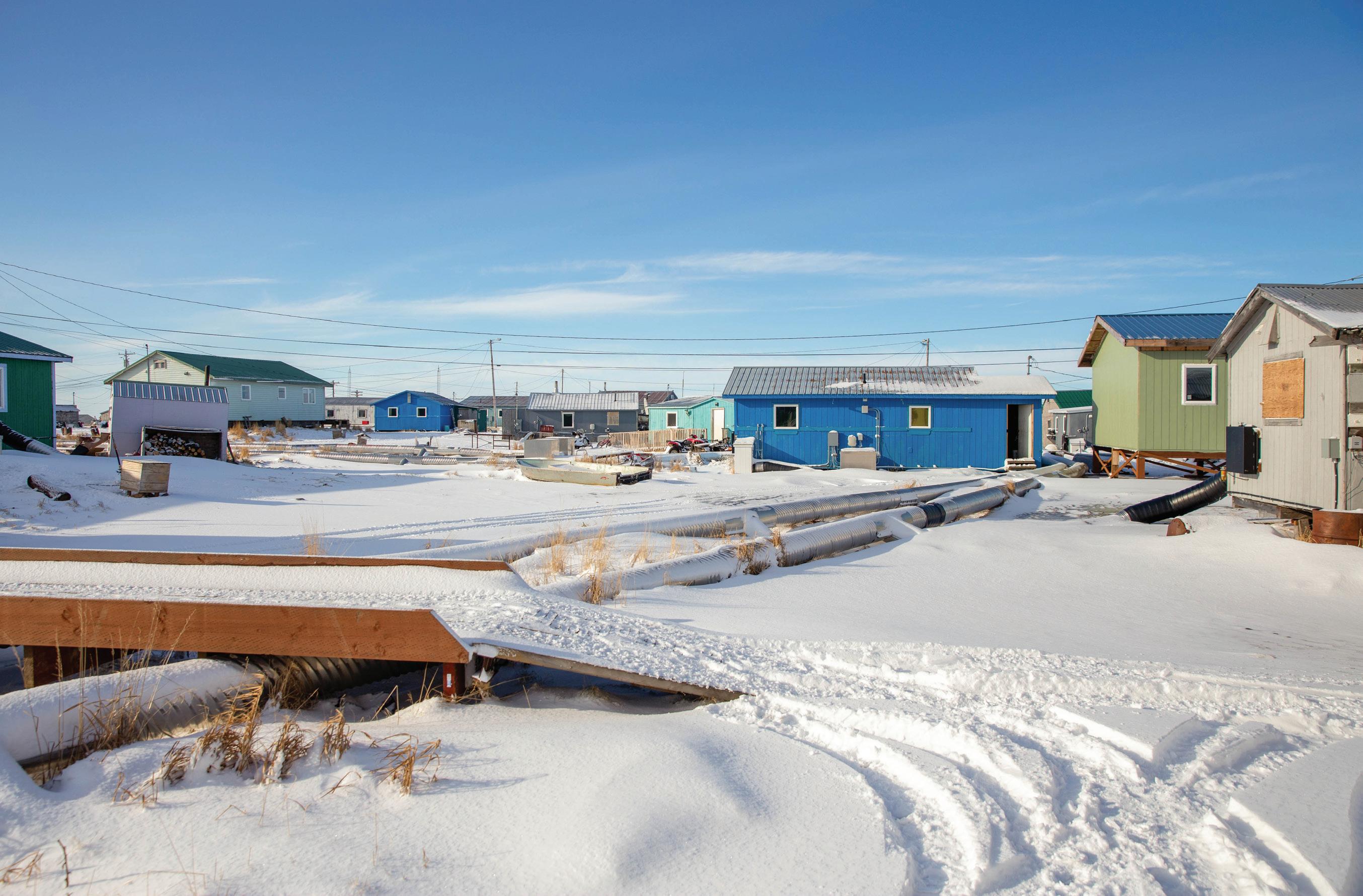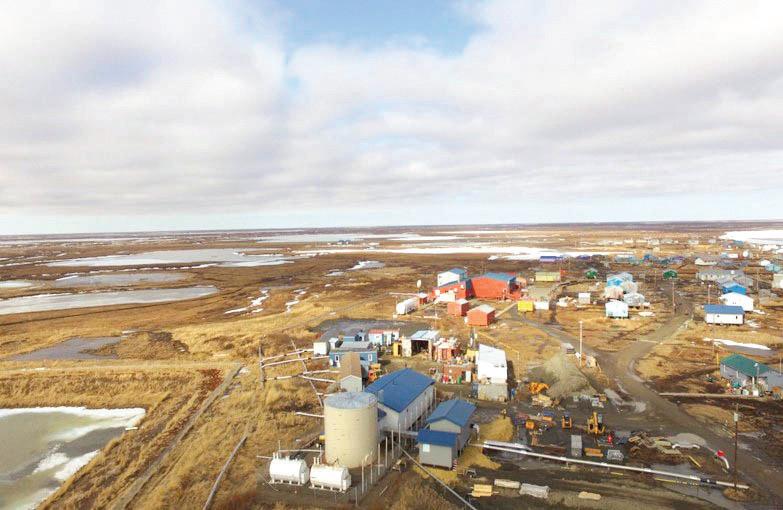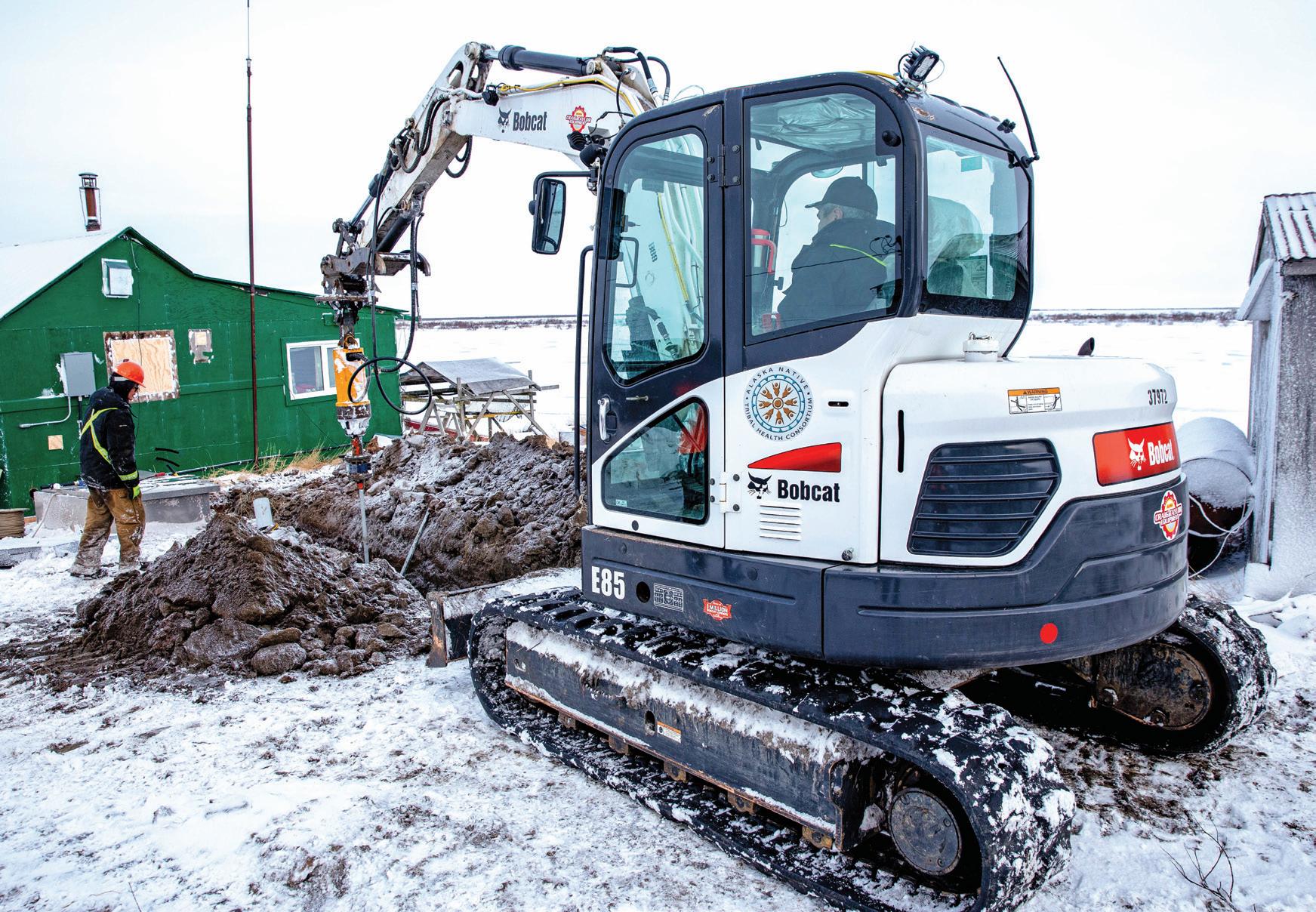
4 minute read
WATER WARRIOR
BY CATHERINE NEWMAN WATER
WARRIOR
In the Native villages of rural Alaska, Charissa Williar ’93 helps engineer sanitation systems that keep the faucets flowing and the toilets flushing
YOU PROBABLY DON’T KNOW ANYONE
WHO LOVES THEIR JOB MORE than Charissa Williar ’93 does. She’s the Sanitation Facilities Program Manager for the Alaska Native Tribal Health Consortium (ANTHC), which means that she’s in charge of ensuring that the 130 Alaska Native villages she works with have access to running water and flushing toilets. She refers to her job as her favorite thing about living in Alaska. (The “unbelievable beauty” is a close second.) “I don’t love the long winters,” she says, “but the fact that I love my job really makes it so easy to stay here.”
Sanitation in the far-flung, rural villages of Alaska is a unique problem that Williar—with an engineering degree, a master’s in public health, and a love of adventure—seems uniquely suited to solving. “There are 229 federally recognized tribes,” she explains, “and most of them are off the
Williar helped provide first-time running water and sewage services to the 105 homes of Eek, Alaska, a community in the Yukon-Kuskokwim Delta, some 400 miles west of Anchorage. Prior to the improvements, residents hauled water and sewage in buckets from their homes to the water treatment plant. Thickly insulated water and sewer mains (shown above) now connect residences to the system. The town also received a new wastewater lagoon (bottom left corner in photo at right) and an upgraded treatment plant (blue roofed building).


road system, very remote and rural.” The villages are small and difficult to access, making it very tough to build a piped water system—especially given the Arctic environment, which all but guarantees frozen pipes. Plus, as Williar explains, there’s the impact of climate change, which means that things start shifting as the frozen ground thaws. “My job is to work with the community leadership to find adequate technical solutions,” Williar explains. One solution is the innovative PASS (Portable Alternative Sanitation System), a gravity-fed 20-gallon all-in-one handwashing station and toilet. Williar must also, as she puts it, “puzzle out all the funding,” which comes from the state of Alaska, as well as the U.S. Department of Agriculture, the Environmental Protection Agency, and the Indian Health Service (IHS).
Asked how she ended up with this job, Williar says, “I’ve always kind of worked in water my whole career.” She graduated from the University of Massachusetts with a degree in civil and environmental engineering, and then moved to the Bay Area, where she spent one year as a lifeguard at the YMCA (which she credits to getting her lifeguarding certification during intersession at Williston). She then worked with a water resources consulting firm in

Completing the project in Eek took more than five years and required installing about 20,000 feet of water and sewer pipe, and bathrooms and kitchens in the homes. The impact for Eek residents is enormous—taking a hot shower or washing dishes without hauling heavy buckets. An article by the Alaska Native Tribal Health Consortium quotes Eek Elder Elias Keyes: “My grandfather used to say a time would come when we could push a button and everything would happen. Now I see that it is. When I’m gone, I won’t have to worry about my grandchildren having safe water.”
San Rafael. “Just by chance,” Williar explains, “the clients for that firm were American Indian tribes. We worked on water rights cases for the West, where the tribes are legally entitled to whatever water they need to sustain their lifestyle.” From there she went to a public works department, where she spent two years building water and sewer systems. And then she joined the Peace Corps and lived in Honduras for three years, continuing her work in water and sanitation there. “I grew up in a small town,” she explains, “but at Williston, I had friends from all over: Chicago, Houston, New York, Tokyo, Mexico City. It’s the place where my curiosity about other cultures was definitely fostered.”
As her time in Honduras was winding up, Williar happened to spot an IHS job in the Peace Corps newsletter and went to work in rural Utah. “And I just loved it. The technical work, but also working closely with the community. Once I found the IHS, I just felt like this is exactly what I was meant to do. I just thrived.”
From Utah, the IHS sent Williar to Johns Hopkins for her MPH degree, and then, in December of 2014, she applied for the job in Alaska. “I moved here, and I couldn’t believe how lucky I was to have this job.”
Williar lives in Anchorage with her two rescue dogs, Suugi and Buck. “They’re what’s called village dogs. They’re mutts, but they’ve got husky, sled-dog mix in them.” She pauses, laughs. “They make sure I’m never sedentary.”










